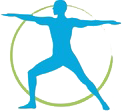
How to prevent and treat sports injuries when returning to outdoor
As we step into Spring, the nation’s lockdown is beginning to lift and the end of March saw the return of outdoor group sports across the country.
People have clearly been itching to get back to doing the sports they love and the outdoors, from football pitches, golf courses and tennis courts, have been filled with groups making the most of the removal of restrictions.
But the return of sports participation can also see the return of common injuries associated with them. Two of the most popular sports, golf and tennis, can both cause a number of musculoskeletal aches and pains – most commonly elbow injuries.
The most common causes of elbow pain are golfer’s elbow and tennis elbow. Golfer’s elbow, also known as medial epicondylitis, occurs when the tendons of your forearm muscles attached to the bony bump on the inside of your elbow become painful. Sufferers may also experience pain in the forearm and wrist.
Tennis elbow, also known as lateral epicondylitis, is a condition in which the outer part of the elbow is painful and tender. The pain may also extend into the back of the forearm and grip strength may be weak.
With people unable to take part in these sports for a prolonged period of time during lockdown, the likelihood of injury will be increased due to the potential decrease in muscle strength and fitness levels.
However, even activities in and around the home, such as cooking and baking perhaps more than usual, can also aggravate injuries coinciding with a return to sports and may increase the level of pain experienced.
There are, though, ways in which you can reduce the risk of these injuries, or even prevent them altogether. Before you step back on to the golf course or tennis court, it’s important that you stretch regularly to loosen the muscles used regularly during these sports. These can include simple wrist, elbow and shoulder stretches.
You should also make sure you ease yourself back in gently when first stepping back out to take part in your chosen sport. Too much too soon is a sure fire way to set yourself up for experiencing problems.
As with most sporting injuries, physiotherapy can be extremely beneficial to treating and recovering from the pain and discomfort caused by the affected area. Here at Physiomove we regularly see patients who are suffering as a direct result of the sport they take part in, whether it be an impact injury or pain as a result of overuse of a joint.
Our specialist treatment will always start with an initial assessment to determine the problem and its root cause. Following a diagnosis, a tailored programme of stretches and strengthening exercises will be devised in order to mange and treat the pain in the most appropriate way. Advice will also be given about managing the injury day to day, including particular tasks and activities that may need to be avoided.
Patients will normally see an improvement in symptoms within eight to 12 weeks. In some extreme cases surgery may be recommended, but with early intervention and appropriate treatment this can usually be avoided.
If you are suffering from tennis or golfer’s elbow, or any other sporting injury, you can contact our expert team today to see how we can help you.











